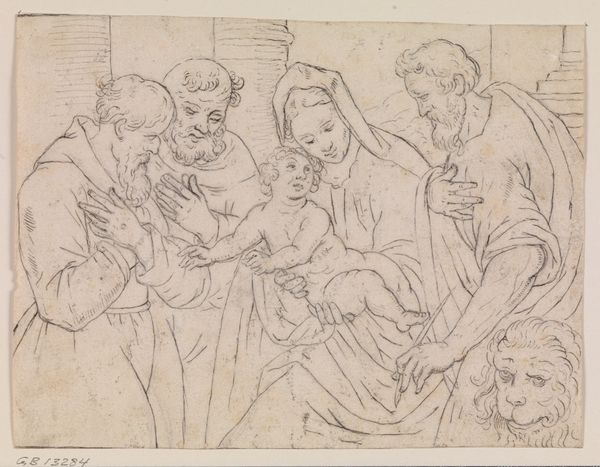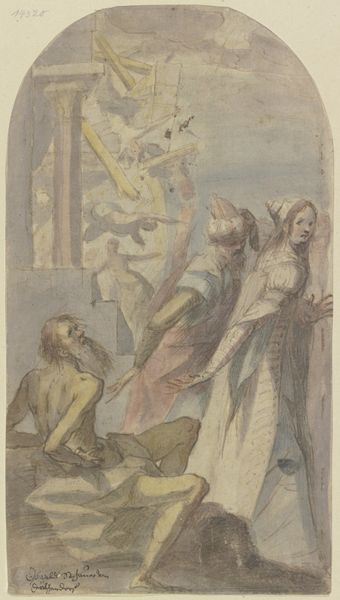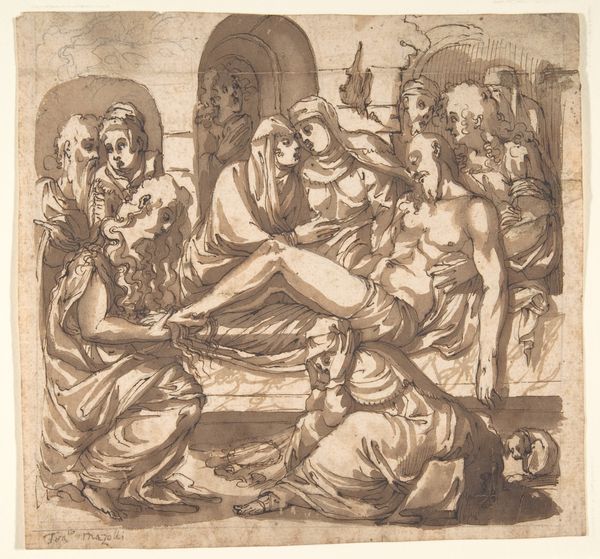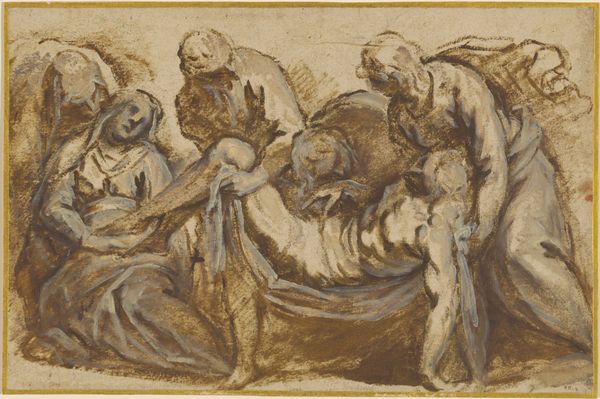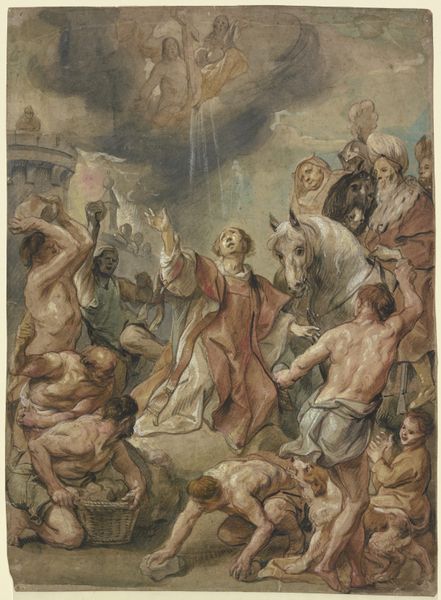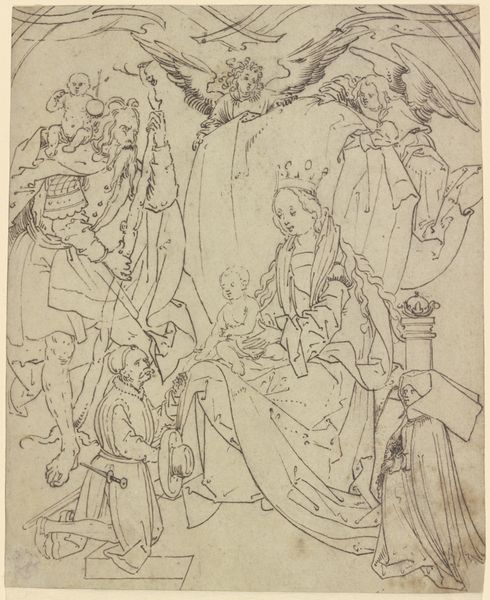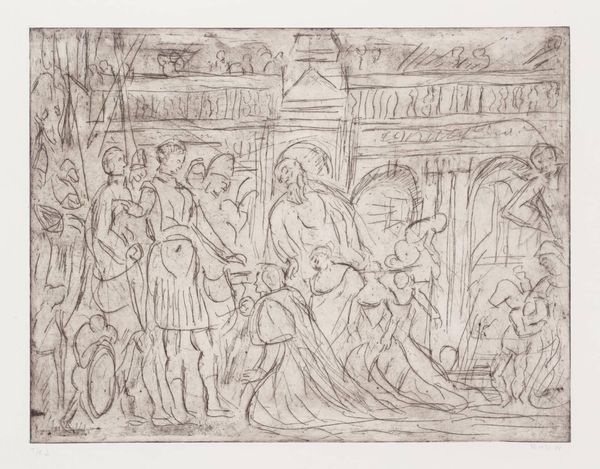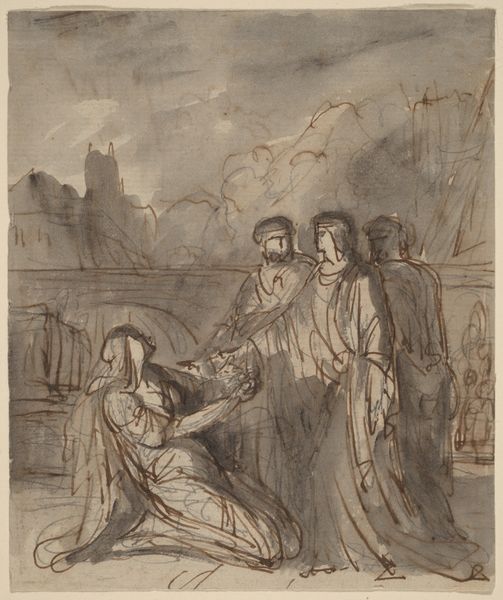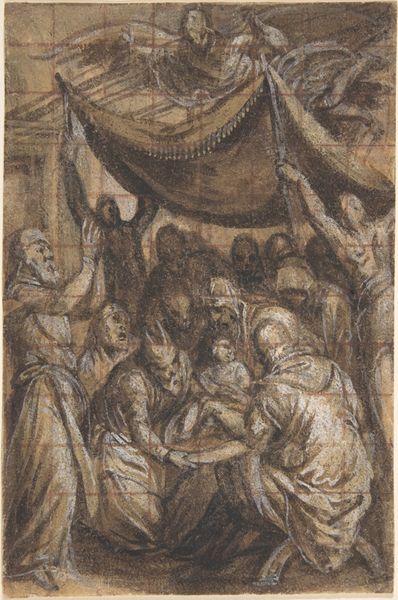
Station of the Cross No. 6: "Veronica Renders Service to Jesus" c. 1936
0:00
0:00
drawing, watercolor
#
drawing
#
narrative-art
#
figuration
#
oil painting
#
watercolor
#
history-painting
Dimensions: overall: 38 x 50.8 cm (14 15/16 x 20 in.) Original IAD Object: Approximately 30 x 50 in.
Copyright: National Gallery of Art: CC0 1.0
Editor: This is Geoffrey Holt’s "Station of the Cross No. 6: 'Veronica Renders Service to Jesus'," circa 1936, in watercolor and drawing. The rendering feels almost medieval in style. What can you tell me about this piece? Curator: Well, looking at this through a historical lens, it's fascinating how Holt uses a visibly dated artistic language, a pastiche of earlier religious art styles, during a period of intense social and political change leading up to World War II. The scene itself, Veronica offering solace to Jesus, has always been about empathy and public acts of faith, wouldn't you agree? Editor: Yes, absolutely. The act of kindness is so central to the story. But why this historical aesthetic? Curator: Perhaps it was a conscious rejection of modernity. In times of upheaval, some artists turned to historical styles to find meaning or stability. Also consider the role of religious institutions and how they preserved certain artistic styles and narratives, acting as a filter through which the public encountered art. Does that make sense? Editor: It does. So the choice of style isn’t just about aesthetics; it reflects the social and cultural context of the time. What about the way it might be perceived then versus now? Curator: I'd argue that in the 1930s, the deliberate archaism might have been interpreted as reverent, evoking the perceived spiritual purity of the past. Today, we might see it through a post-modern lens, recognizing the artifice and questioning its message in light of subsequent historical events. Editor: That's a helpful way to understand its evolving significance. I didn't really appreciate how much social commentary could be embedded in a stylistic choice! Curator: Indeed! It reminds us that art isn't created in a vacuum, but always exists in conversation with its historical moment and the institutions that shape it.
Comments
No comments
Be the first to comment and join the conversation on the ultimate creative platform.
